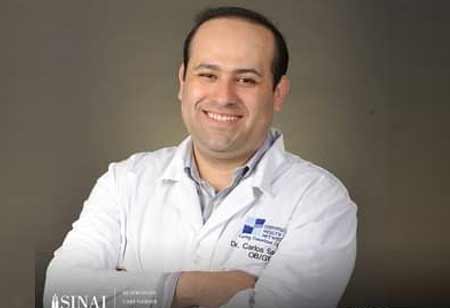Thank you for Subscribing to Healthcare Business Review Weekly Brief

The Opioid Pandemic and Enhanced Recovery after Surgery: Eliminating Opioids from Routine Surgical Practice
Healthcare Business Review
Since 1999, over 900,000 people have died from opioid overuse. In 2020, over 60,000 people died from opioid misuse. Prescription opioids take the life of approximately 40 people per day and account for approximately 24 percent of opioid misuse deaths. This alarming numbers per the Centers for Disease Control should alert obstetricians and gynecologist to avoid the routine use of opioids.
Cesarean section is the most common surgery of all. A routine prescription for an opioid can most definitively set the path for possible opioid use disorder, overdose and death. The same applies to hysterectomy and the use of conventional surgery. It is strikingly surprising that there are states in the U.S. that are reporting an increase in the use of opioids.
A routine prescription for an opioid can most definitively set the path for possible opioid use disorder, overdose and death
Some of the current protocols for postoperative pain still and classically involve the PRN or as needed strategy for pain (even at some of the most prestigious institutions). This, in combination with morphine, hydromorphone, codeine or hydrocodone can result in uncontrolled pain and need for a higher number of morphine equivalents. Opioids after surgery can be associated with tolerance, dependence, misuse, overdose and death. Opioids are not even prototypically designed as a pain controlling medication.
In the later years, some universities have revised their approaches for pain control and philosophies of care after surgery. The specialties positively impacted by these new protocols include colorectal surgery, obstetrics, gynecology, orthopedic surgery amongst others. The protocols center on the principles of multimodal pain control, early feeding and walking, prevention of blood clots after surgery and earlier discharge. The main pillar of the protocols is patient education. This education involves pathways. The pathways are before surgery, during surgery and after surgery.
The name of these protocols is Enhanced Recovery after Surgery (ERAS).
One great example is Sinai Chicago. Sinai Chicago's ERAS protocol for cesarean section was studied in 2018 and demonstrated a reduction of morphine milligram equivalents (MME) of about 75 percent, almost elimination of narcotic prescription to go home with, reduced the length of stay by 1 day and saved the hospital $4,800,000 in 2018. Similar outcomes have been found in colorectal Surgery and Gynecology amongst others.
Some associations like the American Association of Gynecologic Laparoscopy (AAGL) strongly advocate for the use of minimally invasive techniques like laparoscopy, robotics or vaginal surgery. They also strongly advocate against the use of opioid.
By combining a minimally invasive technique and ERAS protocol patients get outstanding results. An example is having a hysterectomy via laparoscopy, robotics or vaginally and be able to go home the same day.
A key factor for these outcomes is the expertise of an entire team and institution. Some institutions have a whole multidisciplinary team behind the scenes for the patient. Critical members of this team are ERAS nurse coordinators. An ERAS nurse coordinator acts as a link in between the surgeon and the patient. This nurse assists in the education, instructions, expectations and navigation through the system and process of surgery. I would highly recommend seeking a surgeon and/or institution that provides with these services and say no to open surgery! The outcomes are significantly better and protective against misuse of prescription opioids.









